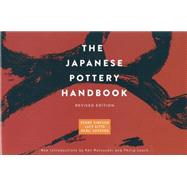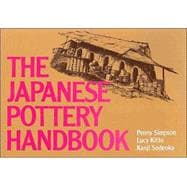The Japanese Pottery Handbook Revised Edition

The Japanese Pottery Handbook Revised Edition
- ISBN 13:
9781568365527
- ISBN 10:
1568365527
- Edition: 2nd
- Format: Paperback
- Copyright: 11/03/2014
- Publisher: Kodansha USA
Rent
Sorry, this item is currently unavailable.
Note: Supplemental materials are not guaranteed with Rental or Used book purchases.
Extend or Purchase Your Rental at Any Time
Need to keep your rental past your due date? At any time before your due date you can extend or purchase your rental through your account.
Summary
The Japanese Pottery Handbook, first published by Kodansha in 1979, has become a classic, beloved by anyone interested in pottery for its practical, step-by-step approach, and homespun charm. Now, thirty-five years since its publication, authors Penny Simpson and Lucy Kitto have refreshed their work, expanding and adding to the material, re-designing the pages, and re-drawing many of the delightful illustrations. The book has a cleaner, more modern look, yet retains the simple, friendly, and distinctively Japanese sensibility of the original. In addition to the new layout and drawings, the authors have tweaked the text and expanded several sections (including the discussion of underglazing and overglazing, and the Tea Ceremony and its utensils). There’s also a new page showing different types of brushes; and the Information chapter has been updated to include websites and recent books.
The book is a manual to the way pots are made in Japan, their forms, and their decorations.The authors give a thorough account of both traditional and modern techniques and also describe in detail tools, materials, glazes, and the setup of workshops and kilns. Lucy Kiitto’s sprightly drawings infuse each page with life and clarity. Pottery terms and expressions are listed with their Japanese equivalents, and the new edition keeps the bi-lingual text, making it easier for the exchange of ideas between foreign students studying in Japan and Japanese potters.
The book is a manual to the way pots are made in Japan, their forms, and their decorations.The authors give a thorough account of both traditional and modern techniques and also describe in detail tools, materials, glazes, and the setup of workshops and kilns. Lucy Kiitto’s sprightly drawings infuse each page with life and clarity. Pottery terms and expressions are listed with their Japanese equivalents, and the new edition keeps the bi-lingual text, making it easier for the exchange of ideas between foreign students studying in Japan and Japanese potters.







